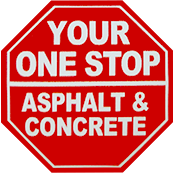The Land and Planned Use
The first factor an asphalt company needs to consider is the lay of the land, the makeup of the soil, and the planned use for the finished project. The raw land itself will affect the design of the lot. A lot with small hills must be leveled just like one with dips in the contour. An analysis of the soil may be used to show water content, previewing the possibility of pothole development and allowing for up-front precautions. Fixing this issue at the start adds to the initial cost, but will pay off in the end as improper drainage will cause repeated repair issues that could end up costing thousands. The planned use helps to determine the required depth of the pavement. Passenger vehicles carry less weight than trucks laden with products, and a plan may include drive-thru space and speed bumps.
Permits
The cost of government permits and incidental inspections factor in the overall cost of building a new parking lot. The government typically demands an initial survey and ground analysis to assure regulators that the project is viable. The prospect of design flaws causing a rush of water and potentially damaging another property is not acceptable. Inspections of the process include visits during the initial excavation, the repair of any soil imperfections, and the pouring, leveling, and rolling process to ensure that any regulatory concerns are met.
Curbing
Installing curbs is an essential part of the paving process. Cement or asphalt curbing around pavement edges along the outer rim of the lot or inside the lot surrounding landscaping additions add to the overall cost of creating a parking lot. The height and depth of cement curbs are often regulated for car and pedestrian safety.
Pouring, Leveling, and Sealing
The act of pouring and leveling asphalt is labor intensive, and the cost reflects the labor factor as well as the raw material. Sealing the pavement at the end of the leveling process is essential to the maintenance of a smooth surface for an extended period. Of course, the larger the lot, the more the cost.
Striping, Painting, Signs, and Special Areas
After the lot is level and meets the needs of a business, the necessary lanes, parking spaces, and warning stripes are painted onto the surface which will factor into the overall cost of the project. Measuring properly-sized areas for vehicles to park is another regulated part of the plan. Trucks get pull-through spots while cars get pull-ins. Pedestrian walkways must be marked, as well as handicapped parking or any other specialized parking spaces. The placing of signs, such as stop signs or handicapped parking signs, and specialized areas such as shopping cart areas are examples of some of the final costs involved in a new parking lot project.
We at A1 Professional Asphalt & Sealing have a long track record of successful paving projects. Contact us today for a professional and complete cost analysis, and let’s get started on your new lot paving project.

